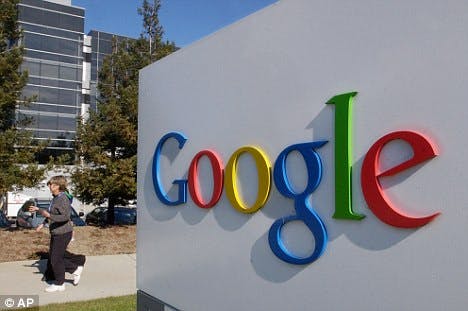Second of two parts
If you don’t work in a high-tech company, it’s easy to make the mistaken assumption that Google is a firm that you do not have to match.
But the truth is that most of what Google does has very little to do with high technology.
Google is essentially an advertising firm that relies on finding and classifying information to attract targets for its ads. It also focuses on the mobile phone because it allows more of its ads to be seen by its users.
Google, simply, is a “talent magnet”
Even if you don’t hire software engineers (less than 40 percent of Google jobs are in that job family), candidates for every key support position that your firm has (in finance, accounting, customer service, IT, statistics, sustainability, HR, social media experts, and most managers) can work at any firm in any industry.
A quick look at Google’s job openings will show you that it hires in almost every field including distinctly non-engineering professions like including nursing, automotive, sustainability, entertainment, telephony, and advertising. Top performers and innovators now fluidly move between industries, so if you think that the best candidates who are considering your firm wouldn’t jump at a chance to work at Google, you simply haven’t looked at the data.
It’s time for executives in every major firm to realize that like it or not, you compete with Google every day for top talent. Google is a “talent magnet,” and if you don’t match its recruiting capability, you will lose out on critical innovators and top performers in every job family.
Once an executive realizes that Google is a direct talent competitor for top talent and innovators, they often become almost instantly frustrated with their own firm’s conservative employer branding and recruiting approaches. Google has been the No. 1 employer brand for all jobs (including college grads) for many years. If you want average workers, you certainly don’t have to worry about Google’s recruiting power, but if you want the best, it’s time to act like it is your talent competitor in almost every job category and location.
“We could never do that” guarantees mediocre results
Almost without exception when I present the best practices of Google to executives or HR leaders, they have an almost universally consistent response. The response is either “We could never do that,” or, “That would never fit our culture.”
My first answer to those kinds of comments is that the best way to become a great firm is — to “act like a great firm.” By refusing to adopt bold people management practices, you are guaranteeing that you will drive away the innovators.
 If you don’t believe me, simply interview a number of innovators and you will find that they insist and even demand to operate in an environment where the firm takes bold actions, takes major risks, and provides innovators with the freedom and resources to innovate.
If you don’t believe me, simply interview a number of innovators and you will find that they insist and even demand to operate in an environment where the firm takes bold actions, takes major risks, and provides innovators with the freedom and resources to innovate.
Innovators and top performers can and will gravitate toward companies and opportunities that they see as a “wow.” If your culture won’t allow bold and aggressive recruiting, retention, and people management practices, change your culture and remove that roadblock to excellence.
If the speed of change within your firm is slower than the speed of change outside your firm, your firm’s downward spiral is not far off. Also be aware that no top performer wants to work for a stagnant or a declining firm.
Is continuous improvement the enemy of innovation?
Setting goals is critical to the success in any firm. However, some firms are now finding that well-intentioned Six Sigma and continuous improvement goals may unintentionally be reducing innovation and keeping your firm from being wildly successful.
Google’s CEO actually warns against continuous improvement, and as a result, he has set the extraordinary target for his employees to create “products and services that are 10 times better than the competition.” He further states that a … “1,000 percent improvement requires rethinking problems entirely, exploring the edges of what’s technically possible, and having a lot more fun in the process.”
Google’s success has helped to prove that if you set your improvement goals too low, you unfortunately might actually hit them.
A history of impressive success
As unique and impressive as its people analytics approach is, the real power of analytics is demonstrated through the business results that it helps to produce. Google, in addition to being among the top three in market value, has also produced these impressive business successes.
- No. 1 in search worldwide;
- No. 2 in smartphone operating system sales (Android);
- No. 2 on the Fortune Most Admired Companies list;
- No. 3 on Fast Company’s 50 Most Innovative Companies list;
- No. 3 among the world’s strongest product brands.
- Listed in the BusinessWeek 50 Top-Performing Companies;
- CEO Larry Page was ranked No. 4 among top CEOs by glassdoor.com.
It’s time for HR to take Google’s approach
Google is a “talent magnet” firm and that is its primary driver of success, just like it is for the New York Yankees in baseball and Barcelona in soccer.
It is wildly successful because it attracts and retains extraordinary talent, and it can expand and grow because it can attract that talent in any new field or job family. As a result, the primary reason to copy and learn from Google is that if you could successfully attract and retain the same caliber of top talent and innovators that it does, your firm would also dominate not just your current industry but any industry or product line that you chose to go into.
You should also consider the distinct possibility that your firm’s low-capability people management practices are actually restricting your firm from producing higher-margin products and services.
Unfortunately most executives (even those inside HR) are not aware of Google’s analytical approach. Once they understand the approach, however, executives quickly see the difference and they prefer the analytical model because it matches the way that decisions are made in every other major business function.
Because Google has proven the business impact of “reinventing HR,” the time has come for the last bastion of non-analytical decision-making (i.e. HR) to finally shift to a data-based model. You simply can’t improve what you don’t measure, and so much of HR is poorly measured or not measured at all.
Final thoughts
A remaining major problem is that many in HR are severely deficient in the areas of mathematics, predictive analytics, and statistics, so they may not be capable of making the shift. Other HR traditionalists (which there are many) may resist simply because they don’t feel comfortable with having “what they do” reinvented.
Look at the extraordinary success that both Google and Apple produced after they made the shift to become “innovation companies” and talent magnets. Both have moved from literally nowhere in the competitive landscape to market cap and product domination within the last decade.
You could assume that their success was based on their buildings and equipment and try to duplicate them. However it wouldn’t take long for you to figure out that rather than buildings or equipment, it is their ability to attract and manage innovators.
The game has changed, and it is no longer the largest or oldest firms that win. Instead, it is the firms with the most innovators that win.
And in the future, that need for innovators will only increase.
Did you miss Part 1? If so, read How Google Is Using People Analytics to Completely Reinvent HR
